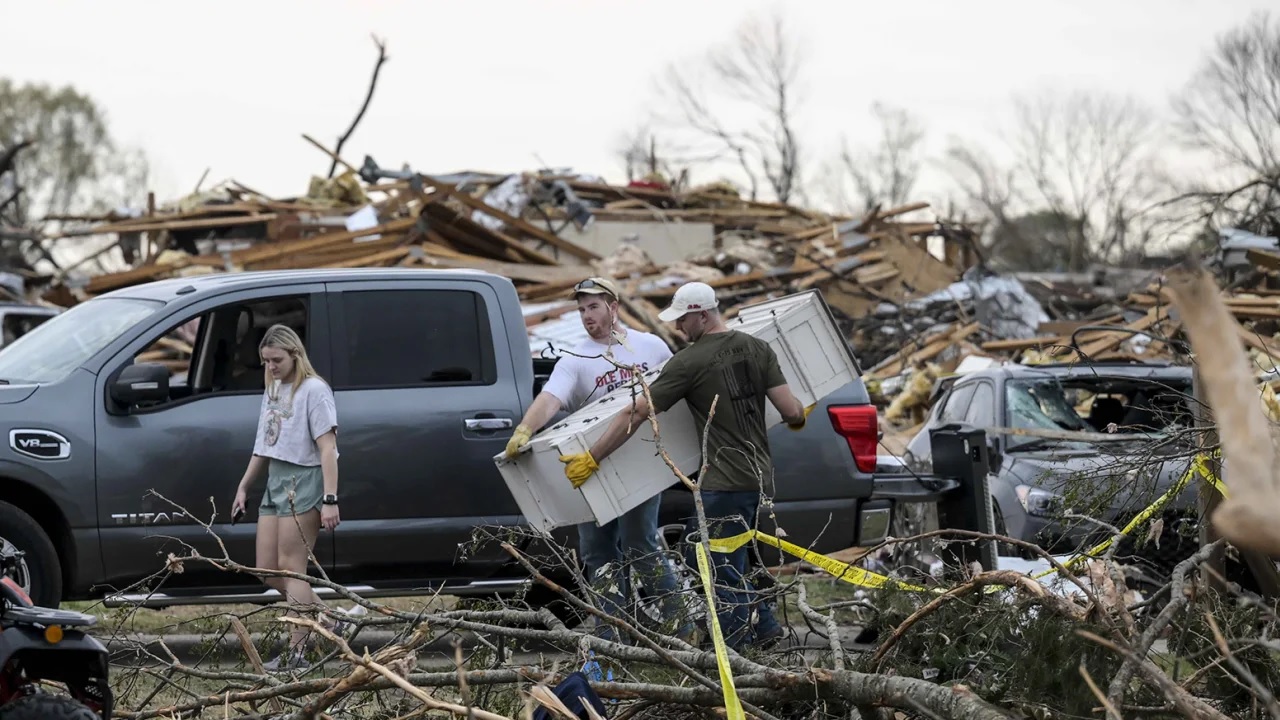Another Rounding of Severe Weather in the United States

Introduction
In recent years, extreme weather storms have been increasingly common and violent in the United States along with droughts, tornadoes, and other severe weather phenomena. Extreme weather events are likely to become more frequent and more severe in the future due to the consequences of climate change, such as rising temperatures and higher levels of moisture in the atmosphere. In the United States, especially in the central and southern regions of the country, tornadoes, a weather phenomenon which is difficult to predict but occur frequently. The most recent powerful storm system and tornado caused damage to at least eight states and prompted at least 50 early reports of tornadoes. The affected states are Alabama, Indiana, Iowa, Illinois, Arkansas, Tennessee, and Mississippi.
Destructive Tornado in Mississippi
At the end of March 2023, a powerful storm swept across the state of Mississippi in the southern United States. It left a trail of destruction that stretched more than 160 km (100 miles) throughout the state, resulted in deaths of more than 25 individuals while leaving dozens of people injured. Mississippi is one of the poorest states, so recovery will be difficult since poverty will make it harder to deal with the effects of current storm.
Biden visited the devastated state of Mississippi, while speaking to the hard-hit Mississippi community of Rolling Fork, President Joe Biden announced that the federal government would pay for the full cost of the state’s emergency measures for 30 days in response to the storm on March 24. Moreover, United States President Joe Biden issued a declaration of an emergency for Mississippi in response to the severe storm. According to a White House statement, Biden directed federal assistance to support regional recovery efforts led by state, and local bodies.
 Emergency Situation in Other States
Emergency Situation in Other States
On April 5th, 2023, a tornado tore across southeast Missouri, leaving five people dead and extensive damage due to which Joe Biden assured the Missouri government of federal support. Before that, Joe Biden declared on April 2, 2023, that a major disaster designation would be accelerated in order to send aid to Arkansas. He added that the federal organizations are collaborating closely with Indiana and other affected states. At least 63 people have died as a result of the storms’ numerous tornadoes, which mostly occurred in the South and Midwest. According to official sources, residents of the Mid-Atlantic States suffered the largest number of power outages and over 200,000 consumers were without power. Nearly 110,000 people lack access to power in the Great Lakes states of Ohio, Indiana, and Minnesota. As this year’s severe storm season starts early, forecasters are keeping a cautious eye on all the weather events. There is still a risk of severe weather that is why the U.S. is preparing to deal with these patterns i.e. tornadoes and strong storms, which are likely to occur on a wide scale in the coming days.
Climate Change and Extreme Weather Patterns
Climate change is causing increasingly frequent and extreme weather events in the modern world. There is growing evidence that warming waters are causing stronger tropical storms than in the past. In addition, as a result of atmospheric instability brought on by warmer temperatures, thunderstorms may occur more frequently and on a greater scale. According to the Intergovernmental Panel on Climate Change (IPCC), climate change will lead to an increase in frequency and intensity of extreme weather events, including thunderstorms. Many scientists believe that there is a significant connection between the two i.e. extreme weather and climate change but there is no immediate solution for it. However, to lessen the threats of climate-related destruction and relocation, developing and under-developed countries in the Global South urgently require assistance by developed countries. The assistance can be provided in the form of technology transfer, capacity building, technical and financial transfers for climate mitigation and adaption strategies so that these countries can become more resilient to the impacts of climate change. Moreover, a worldwide comprehensive, urgent and collaborative response is required due to the severity and nature of climate change issues and catastrophic weather patterns that are being experienced globally.